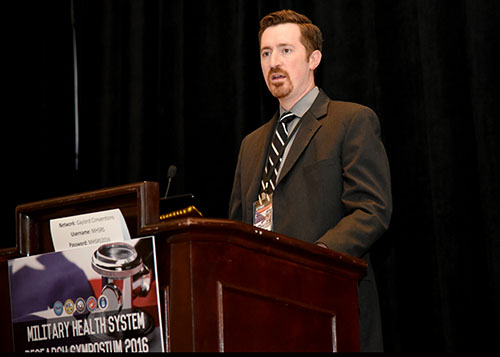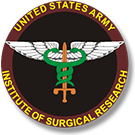Meledeo Presents at Prominent Conference

A blood researcher at the U.S. Army Institute of Surgical Research (USAISR) at Joint Base San Antonio-Fort Sam Houston, Texas, was invited to present his research at a prominent conference. Adam Meledeo, PhD, a research scientist on the USAISR Blood and Shock Resuscitation Combat Casualty Care Research Team, presented at the 63rd American Society of Hematology Annual Meeting and Exposition in Atlanta, Georgia, on December 11-14. More than 20,000 hematologists and other health care professionals from all 50 states and more than 100 countries around the world attended this year's conference.
"The American Society of Hematology annual meeting is the premier meeting for hematology, and this meeting covers everything from coagulation disorders to hematologic malignancies," said Meledeo, who presented virtually at the conference. "It is a rare opportunity for trauma and casualty care research to be invited for presentation at this meeting, and this is a unique chance to share what we are doing in service of our combat wounded to a much broader audience."
According to James Bynum, PhD, chief of Blood and Shock Resuscitation, the acceptance rate for an oral presentation at ASH is low and extremely competitive.
"Dr. Meledeo's selection to present at this meeting highlights the importance of his work and the implications of the findings to the broader community," said Bynum.
Meledeo's presentation focused on a study that was predicated on what he considers one of our most precious resources—plasma samples collected from wounded Warriors in Afghanistan.
"We were able to look over the first 24 hours after injury and observe how changes in the different proteins reflected the injury conditions of each patient," Meledeo said. "The results are foundationally informative as we prepare for the next innovation in damage control resuscitation which is already underway in our engineered plasma and engineered whole blood lines of effort."
Meledeo added that the long term goal for these projects is to drastically increase the availability of blood products at every step including up to the point of injury in order to maximize the ability of combat surgeons and medics to provide life-saving resuscitation to those who need it most desperately. He believes that presenting at a prominent meeting like ASH will benefit his team's research.
Bynum agreed and said, "Presenting military-relevant research at national and international meetings such ASH allows both civilian and military researchers the opportunity to leverage their efforts towards creating novel strategies for treating combat casualties, which often translates to future civilian care."
Meledeo was proud to present his research at this conference and admits he was nervous when he learned that he was invited to present.
"When I was informed that I would be presenting, it was initially very nerve-wracking as I will possibly be speaking to a very large and very well-educated audience," he said. "But being invited to present at the American Society of Hematology is truly an honor, and I was and am extremely grateful to the team here who contributed to the work that will be shared."













